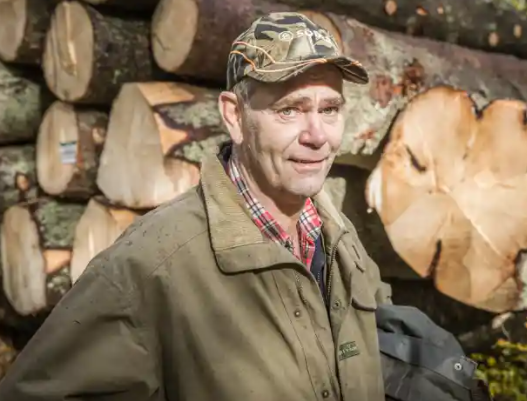
Lars-Erik Levin owns a forest in Southern Sweden. Upon first glance, Mr. Levin doesn’t seem like an ‘environmental villain’. He comfortably strolls through his nearly 200 acres of woodland and identifies goldcrests by their song while pointing out a cauliflower fungus. He also shows reporters the aspen in his wood that the grouse feed on. He mentions that he’s picked over 100kg of chanterelle mushrooms and even more bilberries.
This, however, is the part of the forest that he manages by so-called continuous cover forestry. He claims that he only fells trees with trunk so thick that he can’t get his arms all the way around them. On the other side of his farm, Mr. Levin has a wide-open space of about the space of two soccer pitches. Five years ago, he cut the forest to little stumps. Little remains of the trees except brambles and young, waist-high spruce.
What happened to the trees? Magnus Bondesson, the local officer for the Swedish Forest Agency, calls it “devastation” and “not a good thing for biodiversity.” What Mr. Levin did to his property is referred to as clear-cutting. Clear-cutting, which sees a total forest area a third larger than Greater London cut to the stumps in Sweden annually. It’s become a political issue after the EU revealed its new forest policy over the summer. The EU cautions against this practice and asks for Sweden to do more to ‘protect its forests.’
Sweden’s forestry policy could clash with the EU. As Sweden’s prime minister, Stefan Lofven, says, “forestry should not be micro-regulated from Belgium [EU’s headquarters].” The issue, which is obviously a hot-button one, threatens the Swedish government’s stability. The Social Democrats’ coalition partner, the Green Party, refused recently to bow to a demand from the agrarian Centre Party that asked for forest owner’s property rights to be strengthened as a price for ‘propping up the government.’
The issue is tearing the Green Party apart as well. It pits those who see forest products as key to the green transition against those who want to protect biodiversity at all costs. Rebeka LeMoine, who was the radical runner-up in last year’s party leadership contest, calls it “environmental destruction, the most serious damage ongoing in Sweden.” Hyperbole aside, Sweden, unlike other European countries, doesn’t have a limit on clear-cutting. As a result, more than 100 hectares of forest can be cut in one go. This, as one can well imagine, threatens some 2,000 red-listed species connected to the Scandinavian country’s forests.
LeMoine, for her part, is pushing for the Green Party, at its October meeting, to agree to campaign to limit clear-cuts to two hectares only. She also wants wood used for heating to no longer be seen as renewable and for it to be taxed on its emissions the same way coal and oil are. Maria Gardfjell admit that this is causing a rift in the once-cohesive Green Party. The problem, in part, is that the Swedes need “forest products as substitutes for plastic, clothes, fuel and almost every other kind of product.” She mentions thought, that the need for ‘biodiversity’ is greater.
According to Tomas Lundmark, a professor of forest ecology management at the Swedish University of Agricultural Sciences, harvesting forests by clear-cutting them and then growing trees of the same age can absorb as much as 30% more carbon if you use continuous forestry coverage techniques. The percentage might even be higher than that if done correctly.
Trees between the ages of 30-50 years old, like those in Levin’s plantation (mentioned earlier in this article), absorb the most carbon while forests that have existed for hundreds of years and remain untouched are small net emitters. This is the industry’s biggest claim to sustainability. The total volume of standing wood in Swedish forests has more than doubled in the last century and all of the carbon emissions they suck in nationwide makes Sweden essentially carbon neutral. Unfortunately, the number of biofuels Swedes have uses over the last 40 years has tripled. This helps to reduce the country’s needs for petroleum products and fossil fuels.
No matter what Sweden’s future looks like, environmental or political, this issue will be one that will not go away any time soon. We do hope that you have enjoyed this article. We try to give you the news as neutrally as possible. We take you all over the world to see how the trees impact different nations and people. Please continue to read our blog for th











